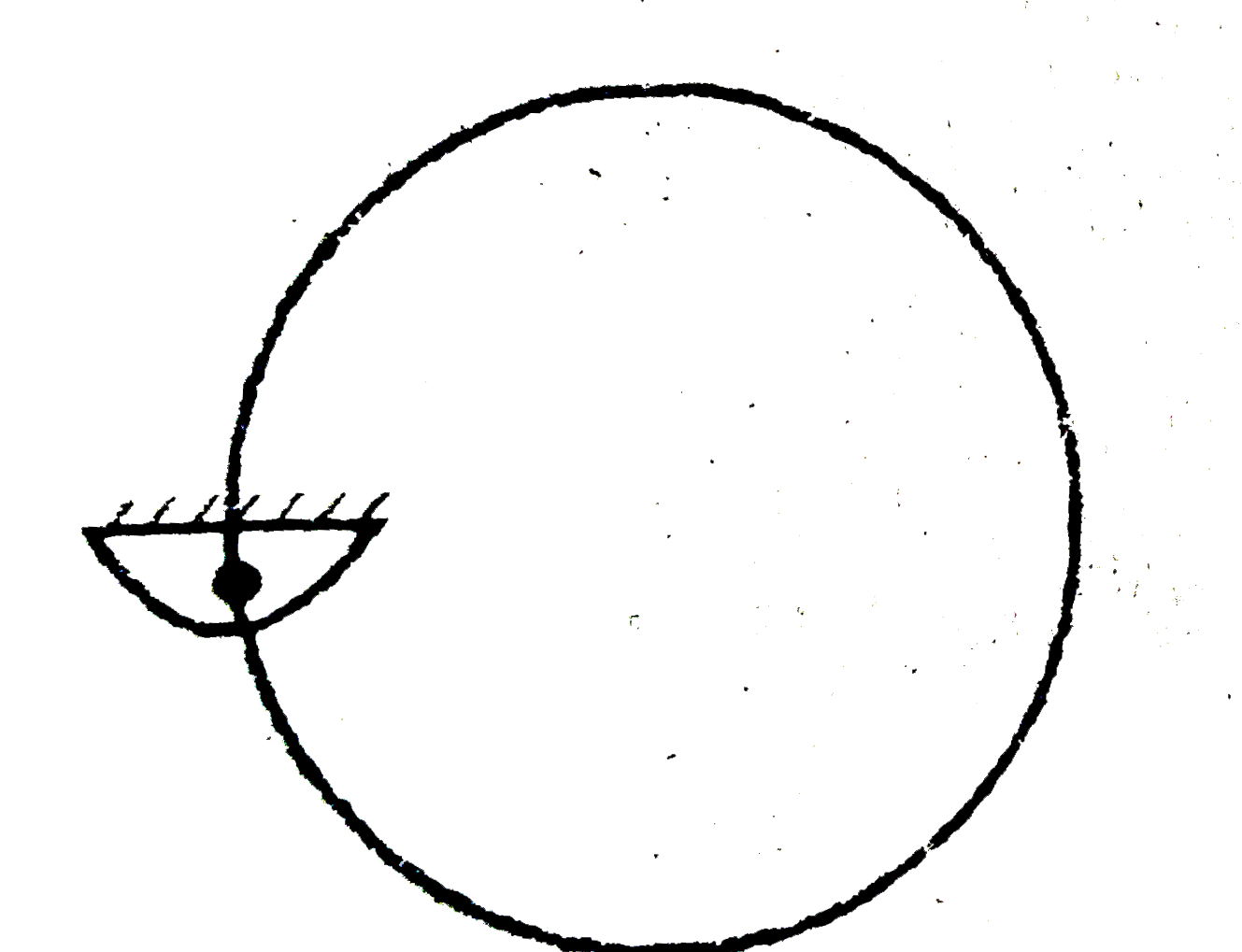A ring of mass 0.3 kg and radius 0.1 m and a solid cylinder of mass 0.4 kg and of the same radius are given the same kinetic energy and released simultaneously on a flat horizontal towards a wall which is at the same distance from the ring and the cylinder. The rolling friction in both cases is negligible. The cylinder will reach the wall first.
Total energy of the ring
=(K.E.)Rotation+(K.E.)Translational
=12Iω2+12mv2c
=12×mr2ω2+12m(rω)2⟨.I=mr2,vc=rω)
=mr2ω2
Total kinetic energy of the cylinder
=(K.E.)Rotation+(K.E)Translational
=12i'ω2+12Mv2c
=12(12Mr2))ω2+12M(rω)2
=34Mr2ω2 .....(i)
Equating (i) and (ii)
mr2ω2=34Mr2ω2
⇒ω2ω2=4m3M=43×0.30.4=1
⇒ω=ω
Both will reach at the same time.
Topper's Solved these Questions
- ROTATIONAL MOTIONBOOK - SUNIL BATRA (41 YEARS IITJEE PHYSICS)CHAPTER - ROTATIONAL MOTIONEXERCISE - MCQs with one correct answer
1 Videos
- MOTIONBOOK - SUNIL BATRA (41 YEARS IITJEE PHYSICS)CHAPTER - MOTIONEXERCISE - JEE Main And Advanced
63 Videos
- SIMPLE HARMONIC MOTIONBOOK - SUNIL BATRA (41 YEARS IITJEE PHYSICS)CHAPTER - SIMPLE HARMONIC MOTIONEXERCISE - JEE Main And Advanced
69 Videos
Similar Questions
Knowledge Check
A hollow cylinder and a solid cylinder having the same mass and diameter are released from rest simultaneously from the top of an inclined plane. They roll without slipping which will reach the bottom firstly
AThe solid cylinderBThe hollow cylinderCBoth will reach the bottom togetherDThe greater densityA thin ring of mass 1kg and radius 1m is rolling at a speed of 1ms−1. Its kinetic energy is
A2JB1JC0.5JDzeroA solid sphere and a solid cylinder having the same mass and radius, rolls down the same incline. The ratio of their acceleration will be
A15:14B14:15C5:3D3:5
A ring of mass 0.8 kg and radius 1m is hinged at a point on its periphery such that the hinge is at the same horizontal level as its centre. The ring in vertical plane and released. Find the force exerted (in N) by the hinge on the ring just after the release.

View SolutionA solid cylinder of mass 8 kg and radius 50 cm is rolling down a plane inclined at an angle of 30∘ with the horizontal. force of friction on the cylinder is?
View SolutionA solid cylinder, of mass 2 kg and radius 0.1 m, rolls down an inclined plane of height 3m. Calculate its rotational energy when it reaches the foot of the plane.
View SolutionA thin ring and a solid disc of same mass and radius are rolling with the same linear velocity. Then ratio of their kinetic energies is
View SolutionA hollow cylinder and a solid cylinder having the same mass and diameter are released from rest simultaneously from the top of an inclined plane. They roll without slipping which will reach the bottom firstly
View Solution
